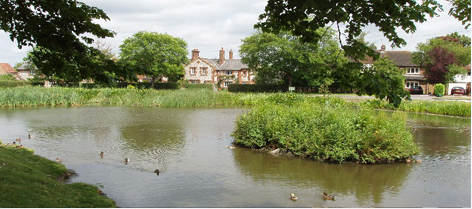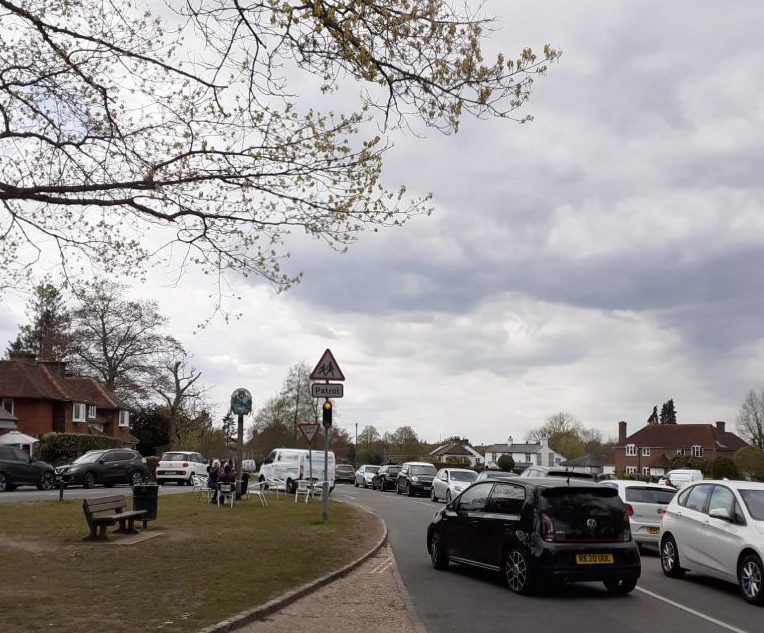
NEW restrictions banning parking outside Tylers Green First and Middle Schools have been agreed and are likely to be imposed before the end of the year.
They are among a number of double and single yellow lines to be painted in various hotspots in the village following complaints about thoughtless and dangerous parking.
However, some critics wonder if the new curbs will be followed if traffic wardens are not present to enforce them, while others think the restrictions will only push parking and congestion problems into nearby residential streets.
Legal orders establishing the parking bans were obtained by Buckinghamshire Council last month following a public consultation last year.
Originally the council proposed seven-day week restrictions outside the first school in School Road, but this has been amended to banning parking and dropping off between 8am and 5pm Monday to Friday because it was felt a total ban would affect local businesses and weekend events on the common.
Full seven day restrictions will be imposed on a long stretch of Cock Lane outside Tylers Green Middle School however.
The schools have launched various campaigns over the years to persuade those bringing children to school to park away from the entrances and encourage children to walk the rest of the way. Tylers Green Middle School, for instance, won a gold accreditation for its efforts in last year’s Travel Wise primary school campaign.
However at some schools appeals have been largely unheeded.
For a full list of the new restrictions see the story further down this blog.
Let’s talk! Council and Taylor Wimpey to try and untangle the Gomm Valley knot

HOUSE builders Taylor Wimpey and Buckinghamshire Council are to meet to see how, if ever, it is going to be possible to build houses in the Gomm Valley, between Cock Lane and Hammersley Lane, Tylers Green.
The planned meeting follows a Government planning inspector’s decision to refuse a large scale development in the valley (see last blog).
The inspector, Matthew Woodward, threw a big spanner in the works when he said Taylor Wimpey’s scheme to build 544 houses and other facilities in the valley would create “severe queues” and “unacceptable safety risks” on the A40 London Road.
Frustratingly for Taylor Wimpey that was Mr Woodward’s only significant concern.
He didn’t indicate the A40 problem was unsolvable but did hint that major – and expensive – improvements would be needed to the A40, coupled with more detailed and robust traffic modelling, if any development scheme was to be successful.
A Taylor Wimpey statement to this blog said: “We are currently considering our options and next steps and will engage with the council, as appropriate.
“We are disappointed with the decision…which will delay the delivery of much needed open market and affordable homes on a site that has been allocated for residential development by Buckinghamshire Council.”
Peter Strachan, the council’s cabinet member for planning and regeneration told this blog: “We are pleased that the planning inspector has dismissed the appeal by the Gomm Valley developer.”
He said that if Taylor Wimpey did not want to issue a legal challenge to the decision they would need to consider how they want to address the planning inspector’s concerns.
“We would welcome the opportunity to meet with the developer in the near future and to discuss how we can take forward the delivery of this allocated development site,” said Cllr Strachan.
See: So what happens now in the Gomm Valley at the end of this blog.
Local news

Birthday honour – Lord’s the home of cricket, was the venue for a thank you presentation last month to prostate cancer sufferer Ron Hedley, of Old Kiln Road, Tylers Green, to commemorate his sponsored walks in aid of the Bob Willis Prostate Cancer Fund. So far they have involved 700 people and raised £48,500. Ron is pictured with his wife Pat and daughter Alex.
Bob Willis, the former England cricketer, died of prostate cancer and Ron’s nationwide marches, mainly featuring cricket club players and supporters, are raising money in support of the fund set up in his name.
Bob Willis’s widow, Lauren Clark and the chief executive officer of Prostate Cancer UK Laura Kerby thanked Ron, who was celebrating his 75th birthday, and his family for their support at a reception at the ground. It was followed by a walk round the outfield to the applause of crowds attending the annual Village Cricket cup final taking place there. Bob Willis’s adversary and friend, Aussie bowler Jeff Thomson, was among those attending.
More walks are planned and you can donate and find out more at https://bobwillisfund.org/ronsmarch Picture: Tina Brown.
Rare find – Ten Roman coins dating from the second century have been unearthed in the Chepping Wycombe area, which includes Tylers Green. The exact location of the find was not revealed at an inquest which declared the hoard an official “treasure”. The coins were discovered by a metal detectorist in 2022 and will now be valued and offered to a museum.
Pub reopens – The Crown in Penn has set Friday, 25 October as a reopening date after a major upgrade. The pub has been granted extended licensing hours enabling it to open from eight in the morning and close at half past midnight Sunday to Friday and 1.30am on Saturdays. Alcohol can be served from 9am to midnight Monday to Friday; to 1am on Saturdays and to 11.30pm on Sundays.
Late night racers – Police say overnight patrols will be increased in the Ashley Drive/Rose Avenue area in an attempt to catch motor-cyclists said to be racing each other in the very early hours, often disturbing residents’ sleep.
Graves sink – Ground staff had to urgently replace soil around freshly dug graves in the Penn Road cemetery after heavy rain caused the earth to collapse.
Drugs haul – Police seized 4kg of cocaine and an amount of cannabis during a raid at a house in Hazlemere.
Pub extends – The Royal Standard of England pub in Forty Green is planning to start work on small extensions to the pub. They were given conditional approval last year. Work includes construction of a brick and flint lychgate with accessible toilets; a permanent open sided gazebo and a cycle shelter for 25 bikes. The pub is now seeking approval of its landscaping plan and use of materials.
Remembrance tribute – The 80th anniversary of the Tomahawk Warrior disaster in Penn (see July blog) will be specially featured at Remembrance Day commemoration on the front common at 11am on Monday 11 November with a member of the American Air Force paying tribute.
Lucky winner – The answers to the Hidden in Plain Sight quiz are displayed in Tylers Green Village Hall. Forty photos of local landmarks taken from unusual angles were featured in the booklet in aid of this year’s Fun Run charity, raising funds for research into Lewy Body dementia.
Just 21 entrants succeeded in answering every question correctly. The winner of the £500 top prize was drawn out of a hat and was presented to Kirsty Heywood of St John’s Road who completed it with son Luke.
Speeding vehicles – Of 3,764 vehicles checked on 30mph roads in Tylers Green and Hazlemere this summer, around six per cent – 221 – were travelling too fast. The highest recorded speed was 51mph.
Uneven figures – A report from the Boundary Commission shows that the Tylers Green/Loudwater council ward has the highest electorate per councillor in Buckinghamshire – 4,876 electors per councillor. Even after ward boundary changes next year we’ll still be the highest, with an estimated 5,102 electors per councillor by 2028.
Hazlemere, by contrast, has one of the lowest with 3,742 electors per councillor, predicted to change to 4,409 per councillor by 2028.

Penn Road traffic disruption goes on and on and on and on…
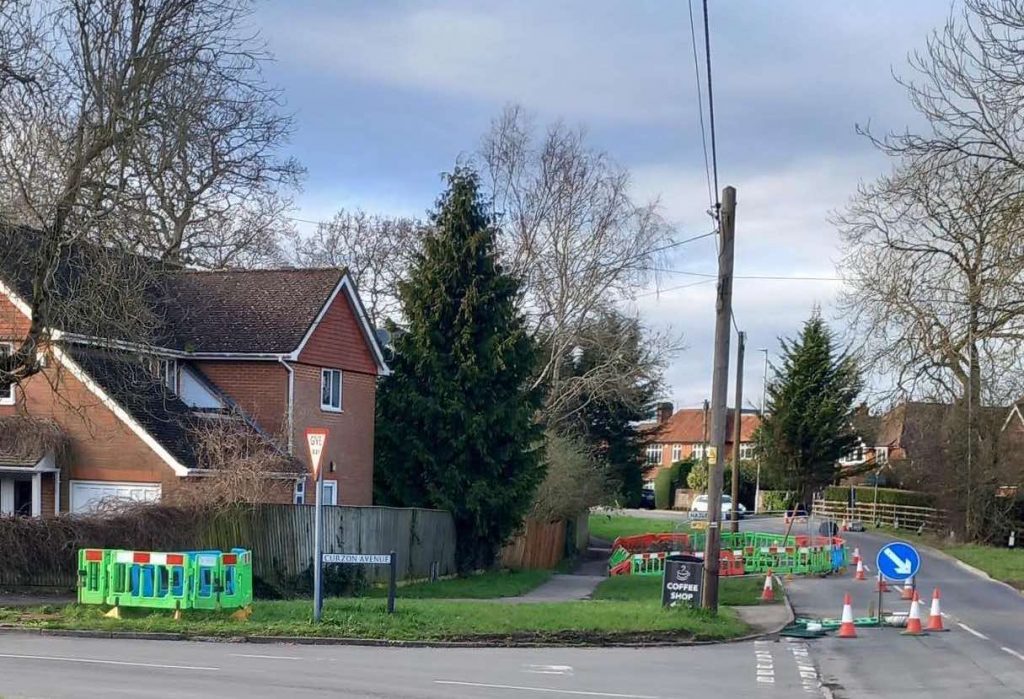
ENGINEERS are carrying out a forensic examination of the earth under the Penn Road near the Curzon Avenue junction to discover why sinkholes keep appearing and hopefully find a permanent cure.
“Our ground investigations include trial holes, topographical surveys and ground penetrating radar surveys,” said Buckinghamshire transport boss Councillor Steve Broadbent.
“We are taking time to fully investigate the situation so that we can ensure a long-term, and what we hope will be a permanent fix.”
That stretch of road has certainly proved problematic.
A sinkhole first appeared early last year, bursting water pipes and closing the road for six weeks. Affinity Water carried out repairs, filled the hole and thought all was well. It wasn’t.
A year later, in February this year, another sink hole appeared in virtually the same spot bursting the new pipes and causing more flooding. The water company carried out more extensive repairs this time, meaning the road was closed for several weeks, and eventually finished that work at the end of August.
Now work is ongoing to tackle the root problem of the subsidence. It’s going to mean more traffic restrictions and possibly more road closures, depending on the findings of the investigation.
It could be a long job. In fact the contractors have obtained permission to close the road and/or impose traffic restrictions as and when over the next 18 months if it proves necessary.
Many locals with long memories are convinced the problem dates back 20 years when the pond that used to be on the corner of Curzon Avenue and Penn Road was filled in to enable a house to be built. They are convinced that, coupled with the wet winters we’ve had recently, water is being forced to go where it wouldn’t naturally go and consequently weakening the sub-soil.
We’ll have to see what the experts come up with.
…as it competes with the Horse and Jockey car park for the longest running village repair

MEANWHILE Cllr Broadbent, who seems to spend half his time apologising for various roadworks and hold-ups, has apologised for the interminable time it’s taking to repair the drainage problems that have deprived the Horse and Jockey pub of its car park in Church Road, Tylers Green for the past 11 months.
He’s warned it could go on for some months yet.
In November last year Thames Water moved heavy equipment into the car park to have another go at repairing a sewage pipe which had broken twice in the previous six months, causing raw sewage to flood into neighbouring properties.
At the time the company said it hoped the work would be completed by the end of last year.
Then engineers realised they needed to replace more pipes than first thought and moved the anticipated finishing date back to the spring. Later the proposed finishing date was moved to the end of July.
It now transpires that it’s not Thames Water who have been solely holding up things but also Buckinghamshire Council who are responsible for the underground soakaway near the sewage pipes.
“Unfortunately the original plans for a simple replacement of the damaged soakaway have had to be revised following the need for more extensive works, including a borehole,” Cllr Broadbent told the Bucks Free Press.
“The changed scope and the consequent delay mean this work needs to be carried out separately from the works already completed.
“An application for appropriate permits to deliver the newly designed highway soakaway and borehole is underway.
“Once obtained this work will be scheduled around the other priority highways flood and drainage schemes elsewhere in the county.”
UPDATE 2 October: Thames Water confirmed it has now finished the repairs it was responsible for and is now awaiting landscape gardeners to restore the damaged areas.The area will not return to normal however until the new soakaway is installed.
Dirk Bogarde’s former home on the market for ten million plus
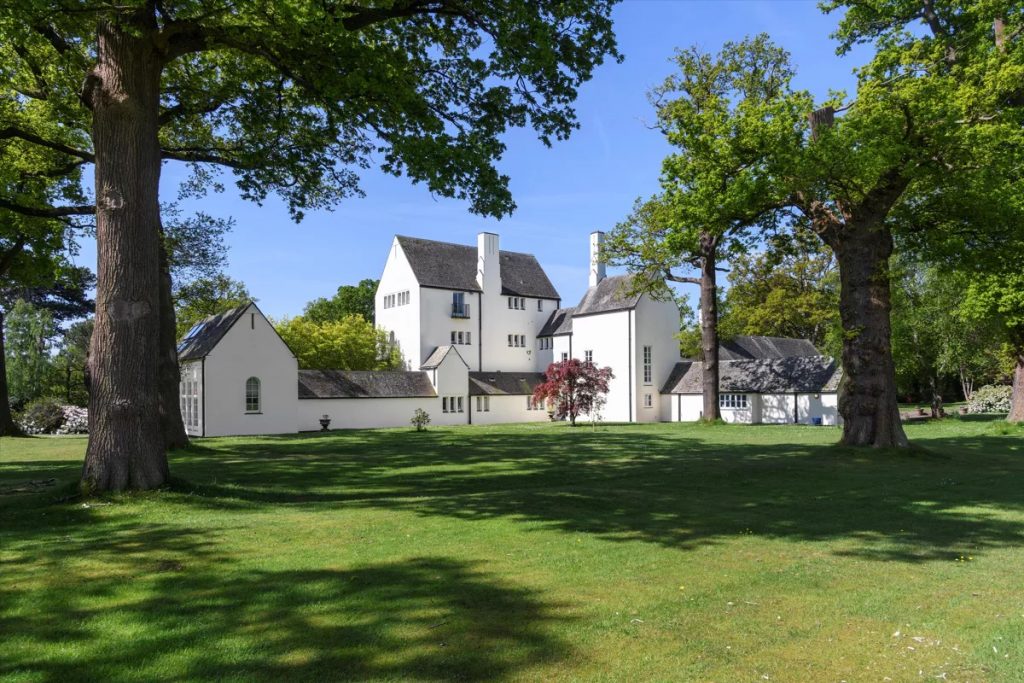
THE remarkable Beaconsfield home of famous actor Dirk Bogarde is on the market for “in excess” of £10 million.
Drummers Yard in Seer Green, is regarded as a classic Arts and Crafts designed home and was one of the first buildings in the country to be given a grading under the ‘listing’ system.
It was built in 1938 and was owned by a trust in the 1950s which used it as a children’s home for children with a parent suffering from TB.
Consequently, by 1960 when Bogarde bought it, the house was in a battered condition but the film star spent a fortune restoring it to its former glory. He then sold it to film producers Peter Rogers and his wife Betty E. Box, famous for producing “Carry On” and “Doctor” films at nearby Pinewood Studios.
The seven bedroom/eight bathroom home also includes a two-bedroom cottage in the grounds.

Celebrating the harvest
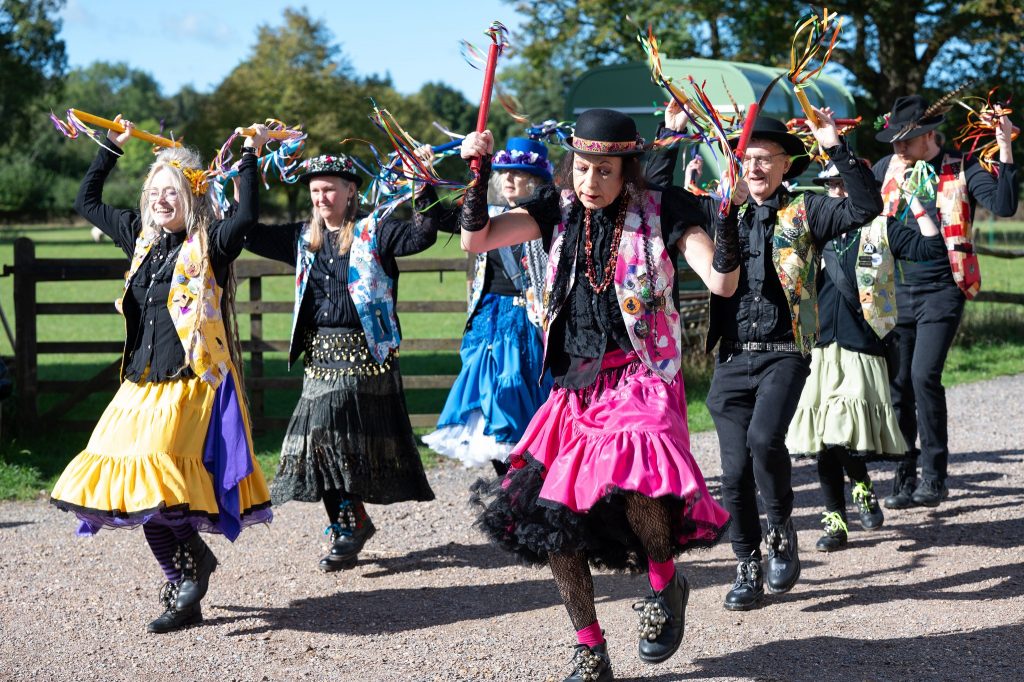
Regional news
Maccie D on the doorstep – Our nearest McDonald’s is getting nearer. The burger chain is to open a restaurant in the Wycombe Retail Park off the A40, opposite the junction with Cock Lane in Wycombe Marsh, replacing the existing Pizza Hut.
Farewell Lady Helen – A funeral service for Lady Helen Wogan, widow of TV and radio entertainer Sir Terry Wogan, took place in St Teresa’s Catholic Church, Beaconsfield last month. She died in September aged 88 and lived in Taplow.
Hotel expansion – Premier Inn has applied to extend its Loudwater hotel off the A40 to provide 169 bedrooms from the present 140. The company says there’s “considerable demand” for additional budget hotel accommodation in this area and wants to provide the additional bedrooms by extending an existing annex.
TV star arrives – Alison Hammond, the TV presenter, has moved to a five bedroom house in Beaconsfield.
Hospital survey – A survey conducted by the Care Quality Commission with patients who stayed in Buckinghamshire hospitals found a high percentage of them felt they were treated with dignity, respect, kindness and had their questions answered by doctors and nurses in a way they could understand. However, only a quarter of them said they were fully satisfied with the quality of their care.
Pub plans – Plans have been submitted to convert the derelict Happy Union pub in Loudwater into living accommodation featuring 21 bedsits with eight communal areas, including kitchens.
After Strictly – Tom Dean, the Maidenhead-based Olympic gold medalist and the first Strictly Come Dancing contestant to leave the competition, is to open his own swimming school at Braywick and Windsor leisure centres.
After Parliament – Former Wycombe (and Tylers Green) MP Steve Baker last month formed his own consultancy company, Baker Strategy Ltd.
Slough’s popular – Slough is the second most popular place in the country for first-time home buyers who are paying an average £323,000 according to the mortgage lenders Halifax.
Restaurant award – The Greyhound pub in Beaconsfield has been named restaurant of the year in this year’s AA Hospitality Awards.
Club’s bonanza – Maidenhead Golf Club has accepted nearly £16million to surrender its lease 15 years early to enable a big housing development to be built on the site near the town centre. The club will leave the course at the end of next year and will in the meantime bank the money while it considers its future.
Here’s where the new village parking restrictions will be
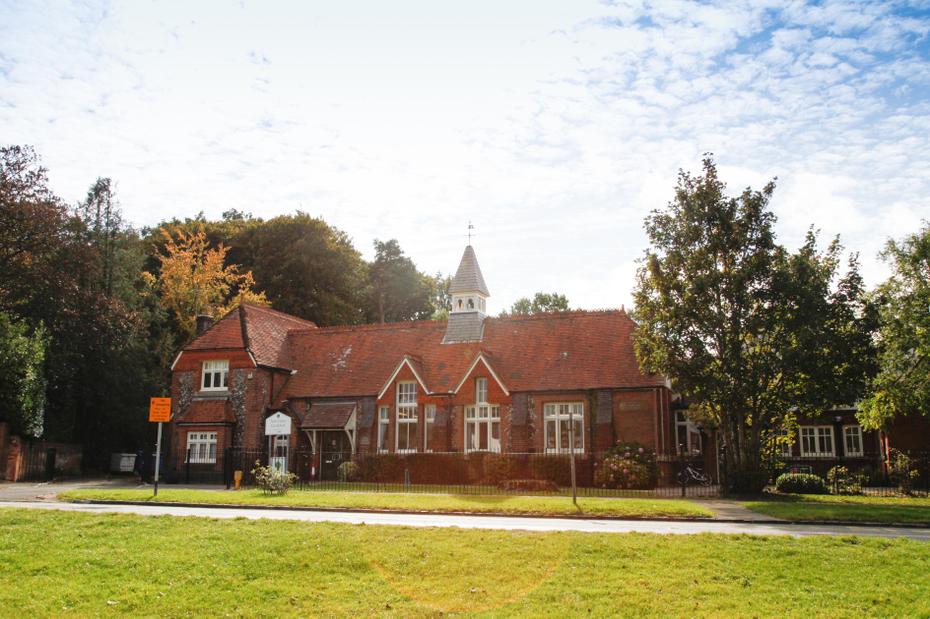
BUCKINGHAMSHIRE Council says it hopes to have completed painting double and single yellow lines and erected accompanying parking prevention signs by the end of December, weather permitting.
The new restrictions are in some cases extensions of existing yellow lines and the legal enforcement of others and are primarily aimed at preventing parking near Tylers Green First and Middle Schools, Penn Surgery and on the corners of streets where motorists have been parking too close to the junction.
The locations are:
- Single yellow line preventing parking or dropping off between 8am and 5pm Monday to Friday in School Road on the common side opposite the first school
- No stopping Monday to Friday 8am to 5pm on the entrance markings to Tylers Green Middle School, Cock Lane.
- Double yellow lines on both sides of Cock Lane from the Barnes Corner crossroads (St John’s Road/School Road/Cock Lane/New Road) to the entrance of the car park opposite the middle school. The yellow lines will continue for some metres along both sides of New Road, Church Road and St John’s Road from the junction.
- Double yellow lines around the junction in front of the St Margaret’s parish rooms in Church Road and opposite in front of Zenopa recruitment offices and continuing some way on the common side of School Road towards the first school.
- Double yellow lines at the junction of Ashley Drive and New Road; and the junction of Ashley Drive and The Lawns.
- Enforcement and extension of restrictions in Elm Road.
A “no waiting at any time” proposal has been removed from outside Pitlundie in School Road near its property line with 3 Fair View following the public consultation,
So what happens now in the Gomm Valley?
SPECIAL REPORT
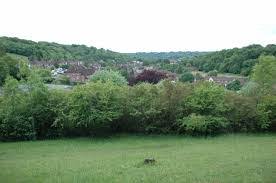
The developer’s perspective
TAYLOR Wimpey gambled that by going for a Government planning inquiry, thereby short-circuiting what they saw as Buckinghamshire Council dithering, they would get a quick positive decision and a quick go-ahead. They even anticipated starting building this year.
That gamble failed spectacularly.
The company made it clear to Matthew Woodward, the Government planning inspector, what they would do if, as it transpired, he turned down their appeal.
- They could take time to completely redesign the scheme and put in a new application at some unspecified future date.
- Or they could decide, like the previous landowner, that developing the site is too difficult and sell up.
The company lawyers told Mr Woodward: “There would no doubt be other options to consider. But what is certain is that no option would deliver the benefits of the scheme any time soon.”
Taylor Wimpey’s accountants will no doubt have a big say in where things go from here. The company has already spent tens of thousands preparing its Gomm Valley plans and being represented by a battery of lawyers and consultants at the planning inquiry.
If they now have to spend thousands more preparing a new, possibly smaller scheme; plus paying for new, detailed traffic modelling the inspector said he would need to see; and then having to contribute goodness knows how much to significant junction improvements on the A40, the temptation may well be to cut losses and walk.
The council’s perspective
BUCKINGHAMSHIRE Council is under the cosh too.
As Taylor Wimpey acerbically pointed out at the Gomm Valley inquiry, we are now:
- 16 years since the site was earmarked for development
- 10 years since it was released to meet housing need
- 7 years from the Development Brief
- 5 years since it was allocated…and still there is no planning permission covering the site.
The Gomm Valley was the last bit of the Wycombe area the council had reserved for housing development – an area in which there is an acknowledged shortage of “affordable” housing.
However, the council’s development plan for houses – which said up to 740 homes could be built in the valley if the fields off Ashwells, Tylers Green, were included – has now been rendered impractical by the inspector’s decision.
The inspector himself said he didn’t see how an alternative scheme could be put forward within the confines of the existing development plan.
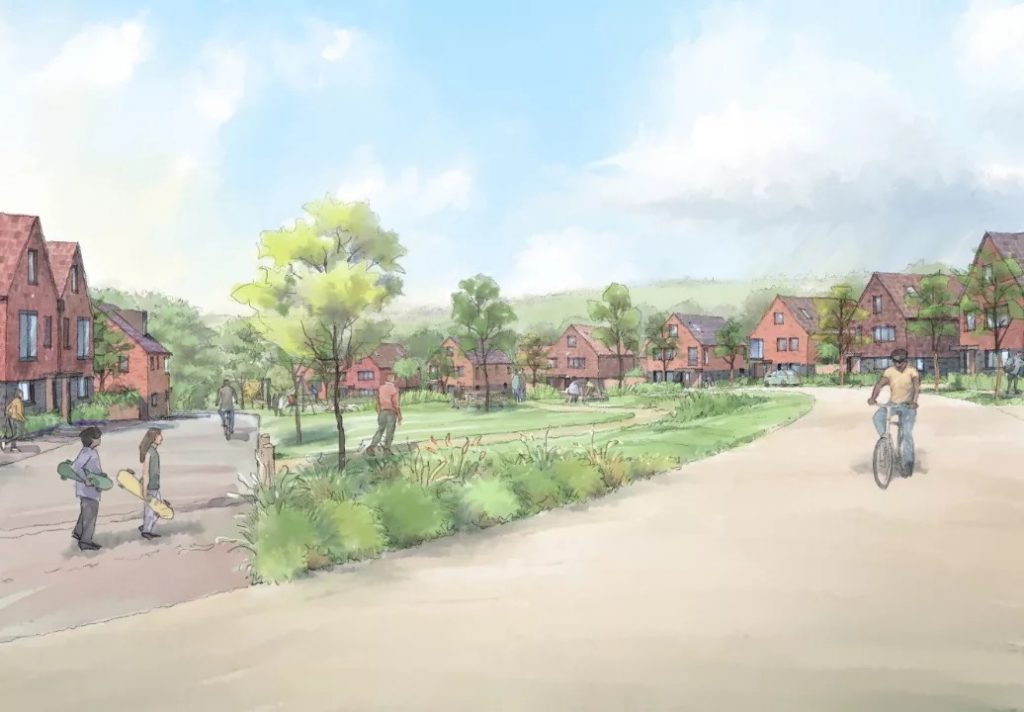
But the fresh element of course is that the new Government has made house-building one of its top priorities.
It says it intends bringing in laws, probably in the new year, which will loosen planning rules, encourage new towns and impose bigger housing targets on councils.
In response to those proposals council leader Martin Tett said last month that if they went ahead 100,000 new homes would have to be built in Buckinghamshire – 42 per cent more than currently planned. Green Belt would have to be released he claimed.
So the pressure on the council to allow development – particularly on areas already allocated for housing like the Gomm Valley – is immense.
An irresistible force. An immovable object.

YET, despite the irresistible force to build new homes, the state of the A40 remains a stubborn, if not immovable, obstacle.
Mr Woodward, the planning inspector, said that under the current planning rules the ONLY reason he can prevent a development on highway grounds would be if the development “would be an unacceptable impact on highway safety or the residual cumulative impacts on the road network would be severe”.
The rush-hour queues, particularly at the Gomm Road and Abbey Barn Road junctions with the A40, would be so severe they would clog up a long stretch of the A40 he said.
Consequently, “there is a reasonable prospect of driver frustration leading to attempts to jump the red-light or join the congested A40, resulting in the blocking of the A40 and the risk of collision with other vehicles.”
All in all, he concluded, it would be an unacceptable highway safety risk.
The bigger picture
THE solution to all this is going to need some creative thinking; some give and take; maybe some wheeler-dealing.
It seems inevitable Buckinghamshire will have to give up some land to allow further house-building. Perhaps plan for a new town or two.
But not here. We’re virtually full-up.
Our schools are full; our medical facilities struggling (the Wycombe area GP services were strongly opposed to the Gomm Valley on the grounds they didn’t think they would be able to cope); and our roads are jammed and seemingly under constant repair.
So perhaps there’s room for a deal. Along with other house builders Taylor Wimpey will be part of the housing boom that’s promised. Perhaps Gomm Valley can be a bargaining chip in those future discussions.
Who knows? There’s an awful lot of water to flow under this particular bridge yet.
You can contact this blog at peter@pennandtylersgreen.com It is updated as necessary but is due to be next fully updated on 1 November.
